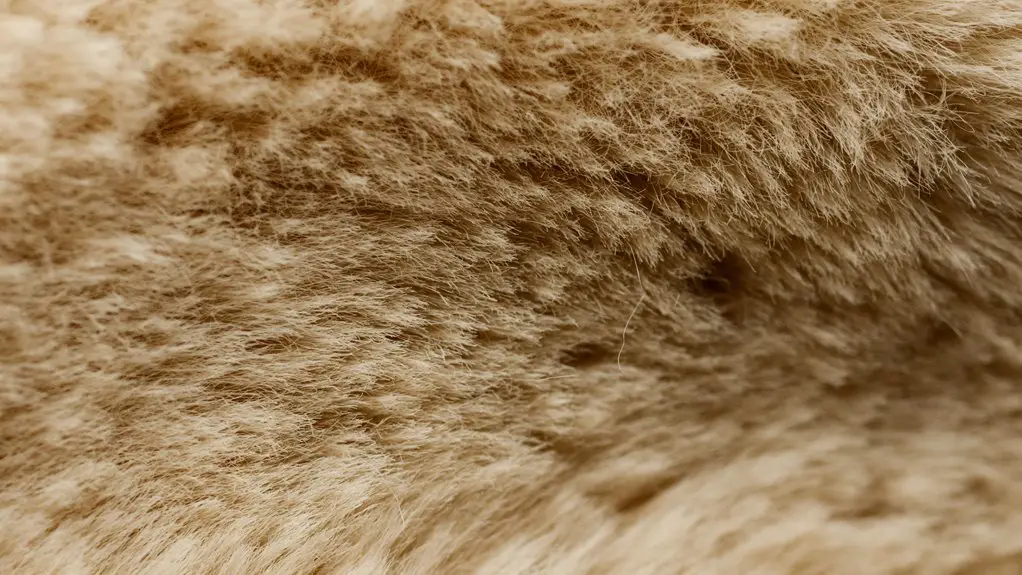You’ll find Kevlar felt fabric offers excellent insulation by withstanding high temperatures while staying lightweight and durable. It also excels at vibration damping thanks to its dense fiber network that absorbs and disperses energy, reducing noise and wear. Ideal for industrial uses like machinery insulation and soundproofing, it outperforms traditional materials in strength and moisture resistance. If you want to understand how Kevlar felt can improve your project’s performance and longevity, keep exploring its benefits.
Table of Contents
Key Takeaways
- Kevlar felt offers exceptional thermal insulation, resisting temperatures up to 900°F while remaining lightweight and durable.
- Its dense fiber structure effectively absorbs and dampens vibrations, enhancing equipment stability and reducing noise.
- The fabric’s inherent flame-retardant and chemical-resistant properties improve safety in high-stress industrial environments.
- Compared to traditional materials, Kevlar felt provides superior moisture resistance, durability, and longevity under harsh conditions.
- Common industrial uses include thermal insulation, soundproofing, protective padding, and gasketing in machinery and automotive sectors.
Properties That Make Kevlar Felt Ideal for Insulation
Although many materials offer insulation, Kevlar felt stands out because it combines exceptional heat resistance with durability.
When you use Kevlar felt, you benefit from its ability to withstand temperatures up to 900°F without degrading, which means it protects your equipment or space more reliably than typical fabrics. You’ll also appreciate its lightweight nature, making installation easier without adding bulk.
Kevlar felt resists abrasion and tearing, so it maintains its insulating properties even under mechanical stress. Plus, it’s inherently flame-retardant, offering an extra layer of safety.
Its chemical resistance means it won’t break down when exposed to oils or solvents. When you rely on Kevlar felt for insulation, you’re choosing a material that delivers consistent performance in demanding environments.
How Kevlar Felt Enhances Vibration Damping
Three key qualities make Kevlar felt an excellent choice for vibration damping: its density, flexibility, and resilience.
When you apply Kevlar felt to vibrating surfaces, its dense fiber network absorbs and disperses energy, reducing the amplitude of vibrations.
Its flexibility allows it to conform closely to uneven shapes, ensuring consistent contact and effective damping.
Thanks to its resilience, Kevlar felt maintains its structure even under repeated stress, so it won’t lose effectiveness over time.
Industrial Applications of Kevlar Felt Fabric
When you need materials that can withstand harsh conditions while providing reliable performance, Kevlar felt fabric stands out in various industrial settings.
You’ll find it invaluable for its durability, heat resistance, and vibration damping properties. Industries rely on Kevlar felt to protect equipment and guarantee worker safety.
Consider these key applications:
- Thermal insulation in high-temperature machinery
- Soundproofing and vibration control in manufacturing plants
- Protective padding in automotive and aerospace components
- Sealing and gasketing in chemical processing equipment
Comparing Kevlar Felt to Traditional Insulation Materials
Industries have long relied on traditional insulation materials like fiberglass and foam, but Kevlar felt fabric offers a different set of advantages that you should consider. Kevlar felt is lighter, more durable, and provides excellent thermal and acoustic insulation. Unlike fiberglass, it resists moisture and doesn’t degrade quickly, making it a reliable choice in demanding environments. When you compare these materials, you’ll see Kevlar felt often outperforms in strength and longevity.
| Feature | Kevlar Felt |
|---|---|
| Weight | Lightweight |
| Durability | High resistance |
| Thermal Insulation | Excellent |
| Moisture Resistance | Superior |
Choosing Kevlar felt means investing in a material that stands up better under tough conditions.
Maintenance and Longevity of Kevlar Felt Solutions
Although Kevlar felt fabric is known for its durability, proper maintenance guarantees it performs at its peak over time. To extend the lifespan of your Kevlar felt solutions, you need to handle them with care and follow a few simple practices.
Avoid exposure to harsh chemicals that can degrade fibers, and keep the fabric dry to prevent moisture-related issues. Regularly inspect your Kevlar felt for signs of wear or damage, and replace it if necessary to maintain optimal performance.
Here’s how you can maintain your Kevlar felt fabric effectively:
- Clean gently with a mild detergent and soft brush
- Store in a cool, dry place away from direct sunlight
- Avoid excessive mechanical stress or abrasion
- Schedule periodic inspections for early damage detection
Following these tips helps you get the most out of your Kevlar felt solutions.
Frequently Asked Questions
Is Kevlar Felt Fabric Safe for Use in Residential Homes?
Using new materials in your home is like opening a window to fresh air—you want safety and comfort. Kevlar felt fabric is generally safe for residential use, but always check for fire resistance and proper installation guidelines.
Can Kevlar Felt Be Recycled or Is It Environmentally Friendly?
You’ll find that Kevlar felt isn’t easily recyclable due to its chemical makeup, so it’s not the most environmentally friendly option. Still, it’s durable and long-lasting, which can reduce waste over time in your projects.
What Are the Cost Differences Between Kevlar Felt and Other Insulation Materials?
When it comes to cost, you’ll find Kevlar felt usually costs more upfront than traditional insulation. However, it’s worth its weight in gold, offering durability and performance that often save you money long-term.
How Is Kevlar Felt Fabric Manufactured or Produced?
You start by spinning Kevlar fibers into yarn, then felt them together using heat, pressure, and moisture. This process bonds the fibers into a dense, durable fabric that offers excellent insulation and vibration damping properties.
Are There Any Health Risks Associated With Handling Kevlar Felt?
Handling Kevlar felt isn’t a walk in the park if you’re not careful. You might face skin irritation or respiratory issues from fibers. Always wear gloves and masks to keep yourself safe and avoid any health risks.
- Finding the Perfect Neutral: Comparing Kona Ash, Bone, and Grey Fabrics - June 20, 2025
- A Guide to Using Kona 108 Wide Back Fabric for Your Quilts - June 20, 2025
- The Ultimate Review of Robert Kaufman Kona Cotton Solids - June 20, 2025







